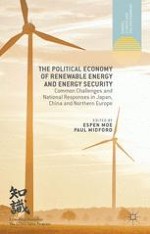2014 | Book
The Political Economy of Renewable Energy and Energy Security
Common Challenges and National Responses in Japan, China and Northern Europe
Editors: Espen Moe, Paul Midford
Publisher: Palgrave Macmillan UK
Book Series : Energy, Climate and the Environment
